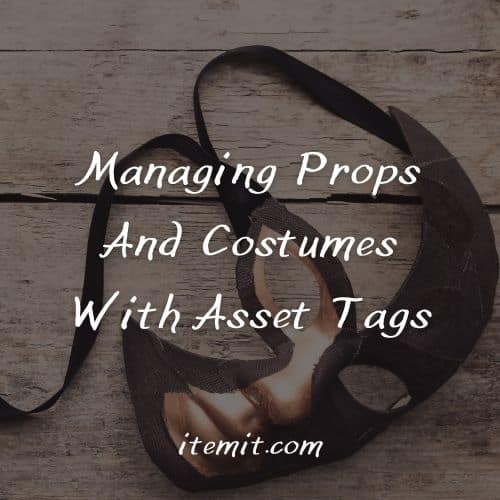If you’re in the film industry, a theatre, or in the gaming industry, you’ll have a lot of props and costumes that you need to track and manage. It’s essential to ensure that your asset tracking for props is robust and effective. To make sure that it is, you’ll be able to use asset tags.
With asset tagging and tracking, you’ll be able to track the movement of your props and costumes, log any bookings or props that have been hired, and create a full history of your props’ movements and activity.
As props and costumes change hands a lot, hands-free asset management is essential, too, to ensure that everything remains clean and safe for your colleague’s and performers.
![]()
What Are Asset Tags?
Asset tags are physical tags which you can attach to assets to track data related to them. They work by integrating physical assets with digital counterparts, or, asset profiles.
You’ll use an asset tracking software to create unique asset profiles. On these profiles, you can add any information, including financial information, important dates, and reminders. This way, you’ll be able to manage all of the changes your props and costumes are going through remotely and transparently.
Then, you’ll link these digital asset profiles with the physical assets by attaching asset tags. Every time you scan an asset’s tag with your asset management app, the last-seen location updates and that asset’s digital profile opens up, ready for speedy editing and updating.
RFID Asset Tracking For Props And Costumes
Due to the nature of performance, it’s likely not reasonable to use QR code asset tags to track and manage your props and costumes. You will be able to use QR codes where possible, by sticking them to relevant locations (such as shelves) and linking them to the props that belong there.
However, there is a better way. With RFID asset tracking, you won’t need your asset tags to be visible to scan them. Therefore, you’ll be able to sew RFID tags onto the inside of costumes, for example, and scan them from a distance.
This way, you’ll be able to audit and manage your costumes while also hiding asset tags from your audience.
To weigh up the benefits and drawbacks, you can read our blog on QR codes Vs. RFID asset tags.
How Do RFID Asset Tags Work?
RFID asset tags work via a handheld third party reader that you’ll link to your asset tracking app via BlueTooth. Then, much of the functionality is the same.
So, every time you scan an asset’s RFID tag with your handheld RFID reader, the asset’s last seen location will update, and the asset’s profile will open up, ready for editing.
When you’re in an asset’s profile, you’ll be able to do any number of things related to your props and costumes. For example, you’ll be able to use equipment checkout tracking functionality to check it out to someone who is using the asset, or to someone you’ve hired it out to.
To find out more about how itemit can help you track your props and costumes, you can book a demo using the button below.
You can also contact us at team@itemit.com or fill in the form below to start your 14-day free trial.
Why not check out these blogs?
How To Use Fixed Asset Management Software When Working From Home
Using Computer Asset Tracking Software For Videogame Development
How Does Medical Equipment Asset Management Software Work?
Use Your Own Asset Tags With itemit!
Start your free 14-day trial now
Instant access. No credit card details required.


